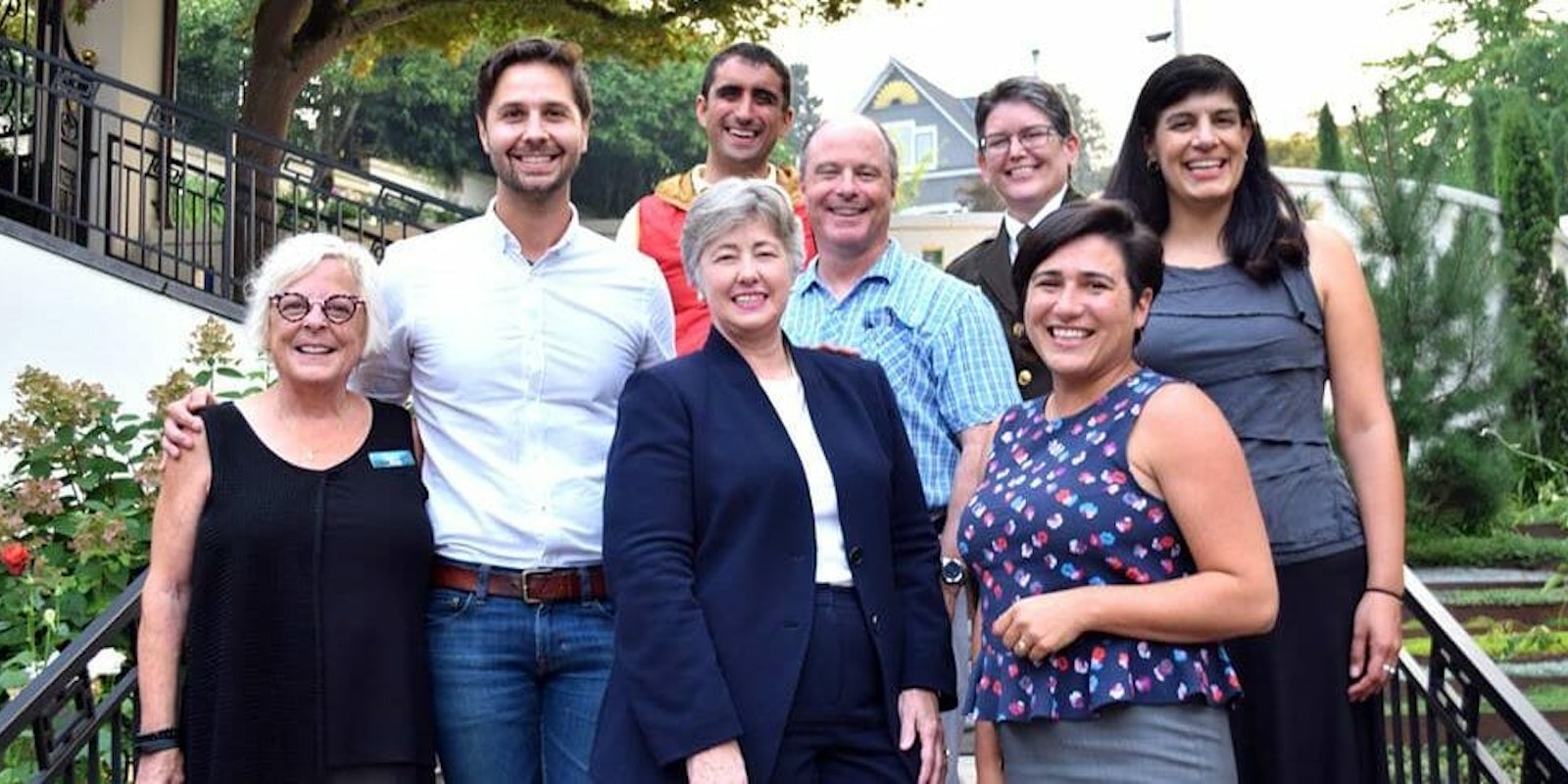BY NICO LANG
Even more LGBTQ candidates ran for office in 2018 than had previously been estimated, according to a new report.
Approximately 606 queer and trans people threw their hat in the ring during the midterm elections, per data released by the LGBTQ Victory Fund on Wednesday. That number is far higher than prior tallies. In September, the nonpartisan advocacy group found that 430 LGBTQ hopefuls campaigned this year.
Of the currently estimated total, 390 will compete in the November general election.
The New York Times has dubbed this record-breaking crop of nominees the “rainbow wave.” Although surveys of previous election cycles are far less comprehensive, the previous high was 2016 — when the LGBTQ Victory Fund estimated that 320 LGBTQ people were running. This year’s total nearly doubles that prior benchmark.
Annise Parker, president and CEO of the LGBTQ Victory Fund, said these candidates are “breaking down long-held political barriers” for the LGBTQ community.
“While the numbers themselves are impressive, we are also running for higher-level offices in larger numbers and in places across the country unthinkable just a few years ago,” the former Houston mayor claimed in a statement.
“Whether electing the first openly trans governor in the United States or tripling the number of LGBTQ women in the U.S. Congress, we have an opportunity to turn this Rainbow Wave of LGBTQ candidates into a Rainbow Wave of LGBTQ elected officials on Election Day,” Parker continued.
The updated numbers show queer and trans candidates have largely been embraced by their communities.
In 2018, nearly a third of the 91 LGBTQ people who ran for U.S. Congress made it through to the November general election. That’s 30 people in total. Meanwhile, four of the 10 queer and trans nominees for governor — or 40 percent — will represent their party next month.
The most heartening statistics were at the state level. An estimated 213 of the 299 LGBTQ individuals who ran for the state legislature or other statewide offices will be on the ballot in November — a 71 percent success rate.
Many of these candidates stand a strong shot of winning in a very critical midterm year.
In Colorado’s gubernatorial race, Polis leads Republican challenger Walker Stapleton by 11 points. If those numbers remain steady on election day, the 43-year-old Democrat will be the first gay man to serve as governor of a U.S. state. America’s only LGBTQ governor, incumbent Kate Brown, is ahead by four in Oregon.
Many of these candidates would make history should they win next month. Kansas’ Sharice Davids, who leads Republican Kevin Yoder by six points, would be the first Native American lesbian in U.S. Congress. Gina Ortiz Jones, who trails incumbent GOP candidate Will Hurd in Texas’ 23rd District, is fighting to become the first queer Latina to sit in the national legislature.
But with this year’s groundbreaking successes, LGBTQ hopefuls also suffered some heartbreaking losses. Jess Herbst, the first openly trans mayor in Texas, was voted out in May. Cynthia Nixon missed out on being New York’s first LGBTQ governor after losing by double digits in the Democratic primary.
Advocates predicted queer and trans people, however, would continue to “transform the U.S. Congress and our governors’ mansions” in the coming years.
“It represents an evolution in American politics — with voters choosing out LGBTQ candidates as the solution to the divisiveness and dysfunction we see in Washington and in many of our state capitals,” said Parker, who was one of the first only LGBTQ mayors of a U.S. city.
READ MORE:
- Transgender homicides are not reported in the Mountain West
- This queer video project believes coming out stories can save lives
- What is going on with Ruby Rose’s career?
Queer and trans people have widely cited Donald Trump’s election to the presidency as motivating their bid for office.
Since Trump was inaugurated in January 2017, critics say his administration has worked to unilaterally roll back LGBTQ rights. The president has attempted to ban transgender people from serving openly in the military, rescinded protections for trans students, and allowed health care workers to cite moral objections to refuse care to LGBTQ patients.


